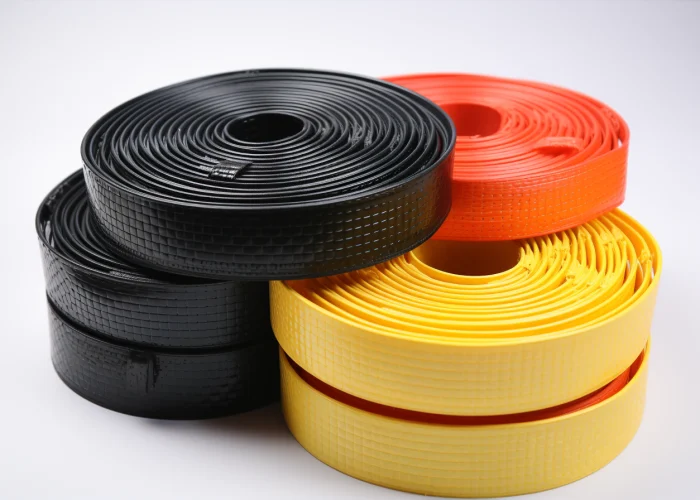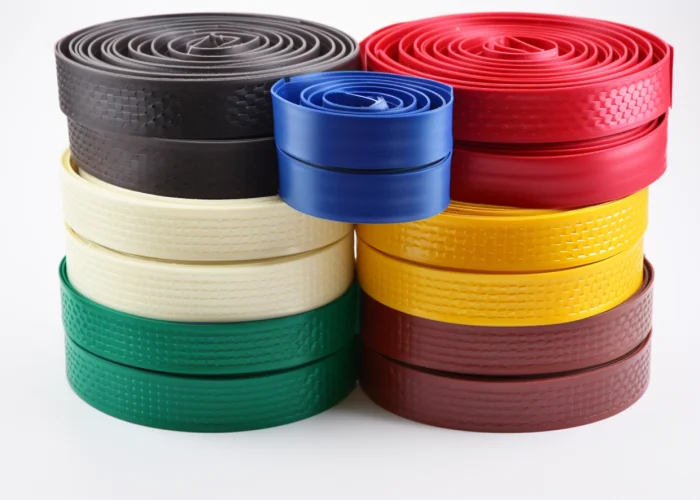With over a decade manufacturing custom coated webbing for global brands, we’ve seen how material selection dramatically impacts both initial costs and long-term performance. The wrong coating choice can increase replacement costs by 300%, while the right selection optimizes both budget and durability.
PVC coated webbing offers the most cost-effective solution at $0.05-$0.36 per meter, making it 40-60% cheaper than alternatives. However, TPU provides superior long-term value with 200% better abrasion resistance, while silicone justifies premium pricing through 8-10 year performance and regulatory compliance.
Discover hidden costs and trade-offs in coating selection, plus proven tips for matching materials to boost performance and budget efficiency.


Webbing manufacturing expert with 15+ years of experience helping product developers build high-performance straps for industrial, medical, and outdoor use.
PVC-coated webbing is the most cost-effective option for standard-use applications, priced at $0.05–$0.36 per meter—up to 85% cheaper than silicone coatings. It delivers adequate durability for general-purpose straps, bags, and consumer goods with 2–3 year life cycles.
Coating Comparison Summary
Coating Type Cost Range (per meter) Best Use Case Typical Lifespan Annualized Cost
PVC \$0.05–\$0.36 Budget consumer goods 2–3 years \$0.02–\$0.18/year
TPU \$0.36–\$0.69 Industrial/outdoor gear 6–7 years \$0.05–\$0.12/year
Silicone \$1.54–\$2.50 Medical/FDA/extreme temps 7–10 years \$0.15–\$0.36/year
From field experience:
✅ Design Takeaway
Choose PVC for cost-sensitive projects, TPU for high-durability outdoor gear, and silicone only when performance regulations (like FDA or extreme temps) require it. Always evaluate total lifecycle cost, not just material price.
Hidden costs can increase total expenses by 200-300% beyond initial pricing, driven by replacement frequency, processing complexity, and regulatory compliance. These factors often outweigh the material’s upfront cost in long-term or regulated applications.
Quick Summary:
• Replacement frequency: PVC may require 2–3 replacements vs. one TPU/silicone cycle
• Processing costs: TPU and silicone need specialized equipment and temperature control
• Compliance fees: Disposal, REACH/RoHS/FDA testing can add thousands per material
• Liability costs: Premature failure can trigger warranty expenses 3–5× original cost
Manufacturing TPU requires tight thermal controls and unique tooling, adding 10–15% to production cost. Silicone, used in medical and aerospace, demands even more controlled curing, pushing up costs by 20–25%, but offsetting frequent replacement cycles.
PVC disposal is more expensive due to its plasticizer content, often incurring a 15–25% waste management premium. Regulatory certifications like FDA or ISO 10993 for silicone can cost $5,000–$15,000 per material grade. In safety-critical markets, failures cause not just product returns but liability claims, magnifying total costs.
To budget accurately, calculate full lifecycle ownership costs—including processing, compliance, and failure risks—not just material pricing.
Environmental factors—temperature extremes, chemical exposure, and UV intensity—should dictate your coating choice to prevent early failure and maintain performance across the product lifecycle.
Quick Summary:
• Temperature limits: PVC fails below -20°C or above 80°C
• Chemical resistance: TPU/silicone needed for oil, acid, solvent exposure
• UV resistance: Use UV-stabilized or naturally resistant materials
• Standard validation: Test to ASTM D4329 or ISO 4892 for environmental fit
For applications exposed to extreme cold (below -20°C) or heat (above 80°C), PVC is unsuitable. TPU is ideal for subzero conditions, while silicone handles 200°C+ environments.
Industrial applications exposed to chemicals demand coatings resistant to specific agents—TPU resists fuels and oils, while silicone handles solvents and acids.
For outdoor products, sustained sun exposure mandates UV-resistant formulations. ASTM and ISO accelerated weather testing confirms longevity under simulated sunlight.
Base your coating choice on quantified environmental data, not just general use cases.

PVC coated webbing is ideal for short-lifecycle, budget-sensitive applications in indoor or light outdoor conditions where premium performance isn’t necessary.
Quick Summary:
• Best fit: Indoor gear, low-cost consumer products, short-term outdoor items
• Performance match: Moderate stress, minimal UV/chemical exposure
• Cost advantage: Lowest annualized cost for 2–3 year lifecycle
• Avoid if: Application is safety-critical, exposed to harsh elements, or high-end
PVC suits high-volume production for applications like:
Its affordability and ease of processing make it the default for controlled environments where cost matters more than longevity.
Use PVC when project priorities align with moderate performance, fast turnover, and cost savings—not for mission-critical or harsh-environment use.
TPU coated webbing justifies its 50–90% premium over PVC when applications demand superior abrasion resistance, flexibility at low temperatures, or extended outdoor performance beyond 3 years. The break-even point occurs when durability demands outweigh frequent PVC replacements.
Quick Summary:
• Abrasion resistance: 200% higher than PVC
• Lifespan: 6–7 years with stable performance
• Cold flexibility: Operates down to -40°C
• Best use cases: Outdoor gear, tie-downs, safety equipment
TPU’s strength lies in abrasion resistance and mechanical durability, especially for high-use applications like construction straps and marine gear. Unlike PVC, TPU maintains flexibility after thousands of flex cycles and extreme weather exposure. Over time, fewer replacements mean lower total cost of ownership.
Use TPU where high abrasion, weather cycles, or low-temp operation justify higher upfront costs.
Silicone coated webbing becomes cost-effective when applications demand FDA compliance, high-temperature tolerance, or biocompatibility, justifying the 3–5× price premium over PVC and TPU.
Quick Summary:
• Regulatory use: FDA, ISO 10993, food/medical compliant
• Thermal range: -80°C to +230°C
• Biocompatibility: Skin-safe, sterilizable
• Best fit: Medical, food, high-heat industrial uses
Silicone excels in niche environments. For medical and food-grade products requiring repeated sterilization and non-toxic exposure, silicone is often the only viable option. It performs in oven-level heat and resists chemical degradation where PVC or TPU fail.
Choose silicone when regulatory, temperature, or safety constraints eliminate other coating choices.
Nylon webbing offers the strongest coating adhesion and tensile performance, while polyester excels in dimensional stability and resistance to UV, moisture, and chemicals. The right base + coating combination maximizes durability and performance.
Quick Summary:
• Nylon base: Strongest + best TPU/silicone bonding
• Polyester base: Stable + ideal for PVC/chemical environments
• Pairing matters: Wrong combinations reduce lifespan
• Use case match: High-flex = nylon, static = polyester
Nylon’s bonding properties make it ideal for high-performance TPU/silicone-coated webbing in safety-critical or flexing applications. Polyester works well with PVC in budget-friendly, stable environments.
Select nylon for coated straps that flex or face load. Use polyester for stable, chemically exposed setups with controlled environmental cycles.
PVC coated webbing provides the most cost-effective solution for standard applications requiring adequate performance at minimal cost. For demanding applications, TPU offers superior long-term value through extended durability, while silicone becomes essential for specialized regulatory or extreme-performance requirements. We provide engineering consultation to optimize material selection for your specific application needs.
Yes. PVC-coated webbing is widely used in consumer goods like backpacks, straps, and pet gear. However, it’s not approved for food contact or medical use—silicone coatings are required in those cases due to FDA and biocompatibility standards.
Key certifications include REACH (EU chemical safety), OEKO-TEX® Standard 100 (textile safety), and FDA approval for food/medical contact. TPU often meets recycling goals, while silicone coatings meet ISO 10993 for biocompatibility in medical devices.
TPU delivers the highest tensile and tear strength—1,000–2,400 kg capacity and 200% better abrasion resistance than PVC. For critical applications (e.g., harnesses, industrial gear), TPU is the most reliable choice.
PVC offers the best cost-performance ratio at $0.05–$0.36/meter for waterproof straps with 2–3 year service life. Choose TPU for premium bags needing longer durability and fewer replacements.